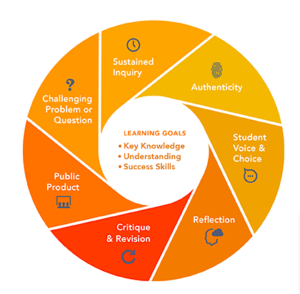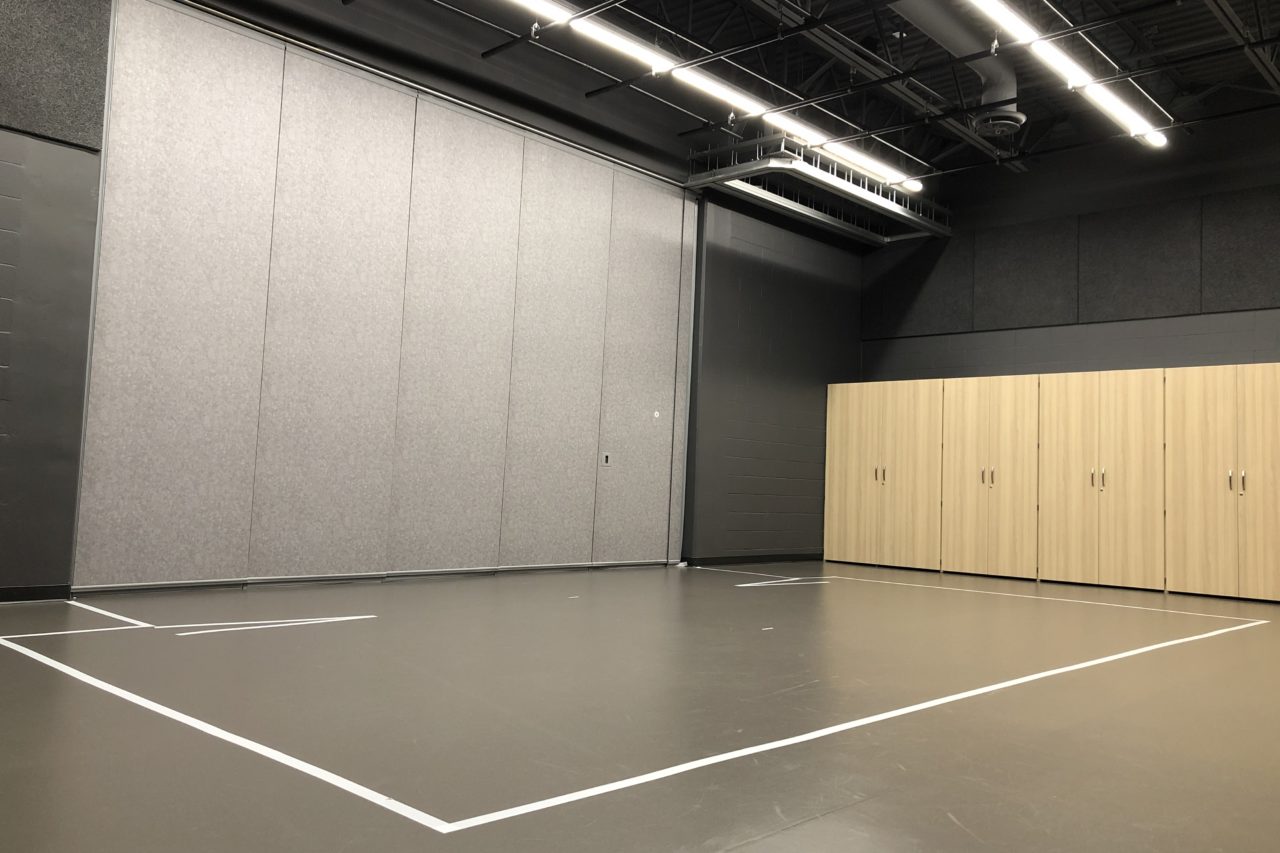Niverville High School (NHS) drama teacher Janelle Malech, is knee deep in rehearsals with both of her drama classes for up coming productions. I had the opportunity to spend some time with her and her students as they rehearsed. In my drive home after, I was reflecting on all that is involved in putting a high school theatre performance together. I couldn’t help but recognize the correlation between the process of mounting a theatre production with what John Larmer outlines as the 7 Essentials Project Design Elements of a project based learning experience.

The first criteria Larmer suggests is the Challenging Problem or Question. It has to be something that will have the students keenly interested in pursuing the learning. The problem/question in putting a high school theatre production together, is the actual mounting of the show. The wholistic, immersive learning that is embodied in dramatic work generally, and in producing theatre specifically, provides a meaningful challenge that can be tailored (play choice, roles in the play, et. al) to a group regardless of level. Given the complexities involved in a production (rehearsals, design, tech, stage management, front of house, promotion, et al.), inviting students into the various aspects deepens and enriches their understanding of what drama and theatre is all about.
Sustained Inquiry is the second criteria. This part sees learners immersed in regular and constant delving. Questions are front and centre, as information is sought out and choices are subsequently made. From play choice, to production concept, to scheduling, to character work, set/light/costume design, to set construction (among other things), questions are constantly driving the work that is being done in the high school production. As students grapple with the various components of a production, they are taking ownership of the learning as they build toward a collective goal.
Larmer suggests that for the project to fit the third criteria of Authenticity, it needs to live beyond the walls of the classroom, and feature all the skills, expectations, and standards of the world beyond school. Further still, it should have the potential to have an impact on the greater community, allowing students to draw connections to what is going on in their lives. Each and every high school production that I have either seen or had the opportunity to be a part of is replete with the tools and expectations of the professional theatre world. The language and vocabulary of the theatre is made immediately relevant through intentional use. Words like “blocking,” and “crossing down-stage centre to the apron” are made sense of in a hands-on way. Mounting the production for the greater community raises the stakes, and sees the students actively immersed in the world of theatre production. When provided the opportunity to choose (or further still to write/build) the play that will be produced, students are given the opportunity to showcase their own concerns and interests.
This in turn leads into the fourth criteria, Student Voice and Choice. The question asking, and decision making integral to the project needs to be rooted in the minds and voices of the students, Larmer states. In producing high school theatre, student voice and choice have the potential to be present right from the get go (see above). While in some instances the teacher carries the load of the decision making at the outset, this can be quickly shared by those involved as the pieces of the production start to come together.
Reflection is the fifth criteria. For Larmer, considering the effectiveness of choices being made throughout the project, the quality of the work being done, and the lateral thinking required to overcome challenges, is essential. Reflection is embodied in the Responding wing of the Manitoba Drama Curriculum. The challenge that I hear from drama teachers is how to have their students reflect in an authentic way. Time and again, the most authentic reflection that I have heard (and seen) being done, has occurred as part of a theatre production experience. The reflective considerations usually manifest in one-on-one discussions with the other members of the artistic team (teacher and students), which may account for their authentic feel.
The sixth criteria, Critique and Revision, is where feedback is given and received by students in an effort to improve on the process/product. The usual tendency is to have the teacher/director offer this, specific to the acting. In situations where there is a shared vision for the production, where a collective student voice is being tapped into, a variety of perspectives are available. When students are involved in all aspects of the production (design teams, et al.), critique and revision are a constant at the various production team meetings.
The final criteria, Public Product, is a share out of the work that has been done with a community beyond the classroom. The whole idea of the effort involved in piecing together a theatrical production is to be able to offer it to an audience. The hundred-plus hours involved in planning, designing and rehearsing is finally shared with the community. Pending the length of the run, some schools have even adopted a talk-back performance (similar to what professional theatres do), inviting the audience to stay after a given performance for an opportunity to Q&A with those involved in mounting the production.
When I think about the level of engagement and earnest drive I saw on the faces of Janelle’s students in the rehearsals, their commitment to the process and to each other in a bid to create something they have a vested interested in sharing with others, I am reminded that a project like this that is nested in the arts is replete with academic, social and emotional learning, will provide those involved with rich learning for years to come.
The NHS performances go up March 18th, at 7:00 p.m. in the new drama room at the school. Tickets are available at the door.
Break a leg everyone!
